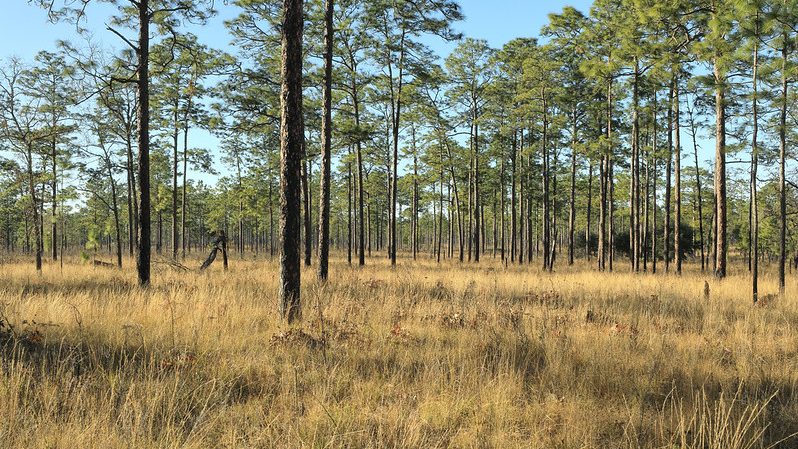May 24, 11am ET: SE CASC Science Seminar on Forecasting Conservation Strategies’ Influence on Landscape Connectivity

Join us for our Spring virtual science seminar series highlighting SE CASC funded projects supporting resource management actions across the Southeast. Each month a SE CASC researcher will provide an overview of their work and the management implications of their research findings.
Forecasting the Influence of Conservation Strategies on Landscape Connectivity
Dr. Tina Mozelewski, Northeast Climate Adaptation Science Center
May 24, 2022 | 11AM ET
View recording here.
Webinar Overview:
Improving landscape connectivity can help to reduce biodiversity declines due to habitat fragmentation and support adaptation to climate change as species move following their climate envelopes. The expansion of protected area networks is one common approach to enhance connectivity, but not all strategies guiding land acquisition and restoration for protected area development will prove equally beneficial. Decisions about which strategies to employ to meet conservation targets will result in protected area networks with variable, and species-dependent, contributions to landscape connectivity. These decisions can benefit from technological advances in simulation modeling, which can now forecast landscape responses to both management and environmental change allowing for the assessment of conservation strategies prior to implementation. In this talk, we will highlight a new approach for evaluating conservation alternatives for protected area network development and their contributions to landscape connectivity prior to on-the-ground deployment. We will discuss ways in which this approach can support managers seeking to facilitate connectivity on their landscapes and help them to prioritize strategies that best meets the connectivity needs of their focal species.
More about the speaker:
 Tina Mozelewski is a postdoctoral research fellow with the Northeast Climate Adaptation Science Center at the University of Massachusetts-Amherst, combining geospatial analytics, species distribution and occupancy modeling, and decision science to support habitat and species conservation in the face of global change. Tina has worked as a conservation researcher and practitioner in a diversity of ecosystems from the deserts and riparian forests of the southwestern US, to the temperate rainforests of the Pacific Northwest, to the pine and mixed hardwood forests of the Southeast, to the montane meadows and streams of California. She received her PhD in Fisheries, Wildlife, and Conservation Biology from North Carolina State University, where her research used landscape change modeling to quantify the influence of climate change, land use change, and conservation action on landscape-level connectivity and ecosystem state change in central North Carolina.
Tina Mozelewski is a postdoctoral research fellow with the Northeast Climate Adaptation Science Center at the University of Massachusetts-Amherst, combining geospatial analytics, species distribution and occupancy modeling, and decision science to support habitat and species conservation in the face of global change. Tina has worked as a conservation researcher and practitioner in a diversity of ecosystems from the deserts and riparian forests of the southwestern US, to the temperate rainforests of the Pacific Northwest, to the pine and mixed hardwood forests of the Southeast, to the montane meadows and streams of California. She received her PhD in Fisheries, Wildlife, and Conservation Biology from North Carolina State University, where her research used landscape change modeling to quantify the influence of climate change, land use change, and conservation action on landscape-level connectivity and ecosystem state change in central North Carolina.
- Categories:
